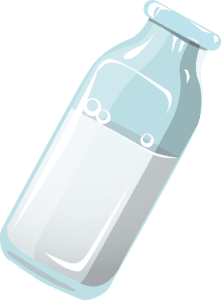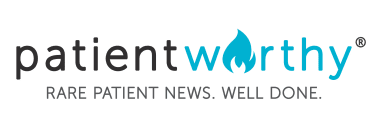Stacey Saiontz is many things: a worker, a wife, a mother. But right now, she is concerned. As an allergy parent, or a parent whose child has severe food allergies, Stacey has spent years advocating for the FASTER Act. The aim of the act is:
To improve the health and safety of Americans living with food allergies and related disorders, including potentially life-threatening anaphylaxis, food protein-induced enterocolitis syndrome, and eosinophilic gastrointestinal diseases, and for other purposes.
But for Stacey, a recent move by the FDA is fear-inducing for her family, for others with food allergies, and for those with conditions like eosinophilic esophagitis. On May 22, 2020, the FDA decided to temporarily relax food labeling guidelines. This move lets companies, who may lack ingredients during COVID-19, substitute 2% of ingredients without having to change their labels. But, as Allergic Living points out, this can cause extreme problems for many.
Food Allergies
According to the American College of Allergy, Asthma, and Immunology (ACAAI), over 50 million Americans have allergies. In terms of food allergies, 4-6% of children and 4% of adults are affected. Food allergies occur when the immune system mistakenly identifies a food as a foreign invader and works to protect the body. Allergic reactions can be mild or severe, and may include:
- Hives
- Shortness of breath, coughing, or wheezing
- Trouble swallowing
- Tongue inflammation
- Pale or blue skin
- Dizziness
- Cramping, nausea, and vomiting
- Weak pulse
In some cases, patients may experience a severe reaction called anaphylaxis, where the entire body reacts. Blood pressure drops, heart rate changes, and it can be life-threatening if not treated immediately. Symptoms often appear within minutes of consumption, but could take up to 2-6 hours.

About 90% of allergic reactions to food are caused by the Top 8:
- Soy
- Wheat
- Tree nuts
- Fish
- Shellfish
- Peanuts
- Milk
- Eggs
Learn more about food allergies here.
Eosinophilic Esophagitis (EoE)
Outside of food allergies, patients within the rare disease and disorder community might struggle to find adequate food based on this temporary change. One example are those with eosinophilic esophagitis, a chronic digestive system disorder characterized by excess eosinophils (white blood cells) in the esophagus. Eosinophils play a role in immune response. So, people with eosinophilic esophagitis may experience slight allergies or hypersensitivities to food, resulting in eosinophil aggregation.
Symptoms include:
- Stomach pain, nausea, and vomiting
- Unintended weight loss
- Poor growth
- Difficulty swallowing
- Malnutrition
- Food being stuck in the throat
Many people with eosinophilic esophagitis also have asthma or eczema. In some cases, dietary changes can immensely reduce symptoms. In the Mayo Clinic‘s dietary strategies, they note that an elimination diet can tell patients which food triggers an allergic reaction. Generally, these diets eliminate wheat, milk, egg, nuts, soy, fish and shellfish. Learn more about eosinophilic esophagitis here.
Food Labeling Changes
As you can see, people with severe food allergies and those with eosinophilic conditions often avoid the same foods. So, it can be difficult for families to safely shop with relaxed food labeling guidelines. Normally, finding safe food requires research, or even calling companies. Now, shopping difficulties are compounded by the COVID-19 pandemic.
Now, the FDA’s new temporary policy will allow companies to substitute 2% of ingredients in their products without having to change their labels. They plan to allow this policy until the COVID-19 pandemic is over, when they will review and alter the policy if needed. On one hand, the FDA did attempt to address food allergens. Their policy notes that:
the ingredient being substituted for the labeled ingredient does not cause any adverse health effect (including food allergens, glutens, sulfites, or other ingredients [such as sesame, mustard, and lupin] known to cause sensitivities.
However, this still presents a huge issue for many families who worry that not knowing the ingredients used can lead to poor health outcomes. Says Mary Vargas, an attorney and allergy advocate whose son has Celiac disease and food allergies:
“To not be able to look at the label and trust that what it says is actually what is in the food is a basic failure of government.”
By only addressing the Top 8 and other potential allergens in their policy, the FDA leaves many families feeling vulnerable and at-risk. Unfortunately, this leaves them open to only 2 options: significantly cut down their diet or hope that their family has no reactions.
But for many, this isn’t good enough. Rachel Pell, whose child has EoE, created a petition asking the FDA to get rid of or change their policy. You can sign it here.
Speaking Out for Food Allergies
Recently, the following organizations penned a letter to the FDA asking that food manufacturers list ingredient changes on their website and/or social media platforms:
- Asthma and Allergy Foundation of America
- Allergy Advocacy Association
- Allergy & Asthma Network
- AllergyStrong
- American Partnership for Eosinophilic Disorders (APFED)
- Center for Science in the Public Interest
- CURED Nfp
- End Allergies Together, Inc. (E.A.T)
- Elijah-Alavi Foundation
- Eosinophilic Family Coalition
- Food Allergy & Anaphylaxis Awareness Connection Team (FAACT)
- Food Equality Initiative
- International FPIES Association
- The Mastocytosis Society Inc.
Additionally, some organizations advocate for food manufacturers to use stickers on their products to denote changes. This way, when shopping, families can see whose ingredients may have changed. This will also help restaurants, summer camps, schools, or other areas in which labels are the only way to tell what is safe for those with allergies.
Mary Vargas also argues that the FDA guidelines need to be more concrete. Currently, says Vargas, the guidelines use the word “should.” As a lawyer, she states:
“‘Should’ is a word that has legal meaning. Should means we recommend, but we don’t require.”
Additionally, there are no distinct guidelines on how to choose whether an ingredient is safe. As a result, food manufacturers could include potential allergens. Finally, the FDA usually consults experts and the public on policy changes, but that was not done in this case.
How Do Manufacturers Feel?
In 2011 and 2012, Colleen Kavanagh’s family required a lot of special food items. Within her family there was pre-diabetes, Celiac disease, lactose and gluten intolerance. When the elementary schools near her banned nuts, Colleen tried to think of a way to create allergy-friendly, healthy, minimally-processed food – and Zego Foods was born.
Because of her food’s formulation, Zego Foods won’t be making any changes. However, Colleen advocates for people to speak up and contact the FDA to reduce danger and mistrust. In addition to harming consumers, she notes that this change has a number of other potential adverse effects:
- Creating consumer mistrust of our food system
- Setting food manufacturers up for lawsuits
- Causing importing and exporting issues, particularly if other countries require up-to-date and accurate food labels
Dan Waters, CEO of Enjoy Life Foods and parent of a child with a peanut allergy, also does not plan on altering his food, which is free not just from the Top 8, but from the top 14 food allergens. But he fears that this move could damage the trust consumers have in allergy-friendly brands.
Moving forward, they advocate for all changes to be posted to manufacturer websites and social media. Additionally, the FDA, or another organization, could create a list of changes for those with allergies.
Interested in getting involved? Consider writing to the FDA about your concerns.


